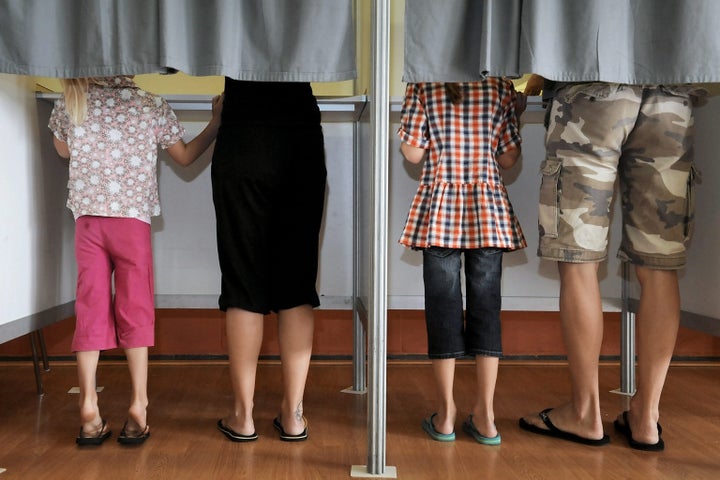Despite being members of the modern world’s oldest continuous democracy, Americans aren’t great at turning up to vote. The U.S. has among the lowest voter turnout of developed democratic nations. The reasons are complex and ingrained — from institutionalized voter suppression to individual apathy and distrust in the government.
And now, with the 2020 presidential election only five months away, the coronavirus pandemic has added an extraordinary new hurdle on the path to participatory citizenship.
While here in the U.S. we have come to see disengagement as a birthright and disenfranchisement a feature of the system, in a number of other countries, voting is more than a right: It’s required. Some experts believe that making voting mandatory — penalizing those who don’t, or rewarding those who do — could get more U.S. voters casting ballots. And that could bring our democracy closer to being truly representative.
“Compulsory voting is the most effective way to boost voter turnout,” said Stanford political scientist Emilee Chapman.
American voter turnout ranks 26th out of 32 highly developed democracies in the Organization for Economic Cooperation and Development, which focuses on economic and trade relations between member nations. Voting is typically highest in presidential election years — in 2016, 61% of Americans voted — and dips lower in the midterms. The 2014 midterm elections saw the worst voter turnout in more than seven decades, with a national average of 36.3% turnout by eligible voters.
Four years later, the 2018 midterms had the highest turnout in 40 years, yet only a bare majority — 53% — of eligible Americans voted. That jump was fueled in part by youth turnout, which increased dramatically from 20% in 2014 to 36% in 2018, a crucial development that allowed Democrats to take back control of the House of Representatives.
If you want people to care about the political system, it surely helps to show that the political system cares about them and won’t make decisions without hearing from every citizen.
Emilee Chapman, Stanford University
The reasons for low voter turnout are socially complex as well as structural. The obstacles to registering and voting are much higher here than they are in other countries. For instance, America is one of the few democracies in the world that doesn’t put the federal government in charge of registering its citizens to vote, leaving it up to individuals to register and putting the burden of maintaining accurate voter rolls on local officials. Nearly one-third of eligible voters in the U.S. are not registered to vote.
And even the eligible voters who are registered may still be kept from voting because of voting restrictions; 34 states have laws requiring or requesting voters present a government ID or other approved identification to vote. Voter ID laws often create barriers to voting for both minorities and the poor, since state-issued IDs can be relatively expensive and difficult to obtain. Other factors, like a scarcity of polling places, can make voting more difficult and time-consuming, a situation that disproportionately affects minority voters.
Further, unlike other countries, U.S. elections are often administered by state or local elected partisan officials, who have been accused of putting their thumbs on the scales for their own or their party’s political benefit. In 2018, the eventual winner of the Georgia governor’s race, Republican Brian Kemp, was able to oversee and administer his own election as the secretary of state, prompting accusations of voter suppression.
An Electoral College that put two losers of the popular vote into the Oval Office in the last five elections and Senate seat apportionment that gives all states equal representation, regardless of population, both contribute to a feeling in the U.S. that individual votes don’t really matter. And it all adds up to Americans’ general cynicism about voting and the sense on both sides of the political spectrum that the system is rigged.
While not a panacea, compulsory voting in the United States could help break through the cynicism and apathy surrounding elections and disrupt the longstanding patterns of exclusion that so often dominate American politics.

Twenty-two countries mandate that citizens vote, including five European nations and a high concentration of countries in Central and South America (though only half actively enforce their compulsory voting laws).
Belgium, which leads the world in voter participation, first mandated voting in 1893 as a way to combat the practice of vote-buying (bribing voters to vote a certain way). Since then, voting has become a patriotic tradition in the country, and the act of going to the polling place is a communal activity that’s part of the social fabric.
In the last four decades, voter turnout for federal elections in Belgium has been between 90% and 95%. In the United States during that same period, the voting rate was between 58 and 68%.
There is good evidence that making voting mandatory gets more people to the polls. Chile had compu